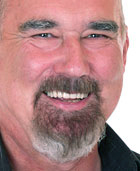There is one social communication technique which is rarely used and its remarkable benefits and pleasures are only occasionally stumbled upon by chance. That is the question of acknowledgement.
Definition:
- Recognition of another’s existence, validity, authority, or right.
- An answer or response in return for something done.
- An expression of thanks or a token of appreciation.
- The act of admitting or owning to something.
When it comes to communication, that irksome phenomenon of open loops returns to trouble us as much as ever.
If we say something to another person, that fact by no means assures that we have been heard—or heard correctly.
So there is a slight mystery; an open loop. Open loops can be very distracting and hold your attention long afterwards.
There is even a scientific term for it: The Zeigarnik Effect, named after Russian psychologist Bluma Zeigarnik. It means, among other things, that the mind will cling on to things that are incomplete and won’t let them go till there is a resolution. Continue reading

